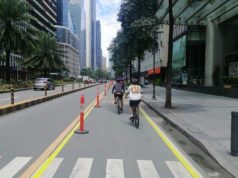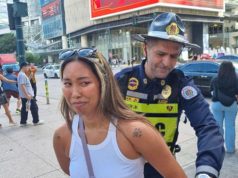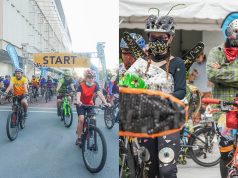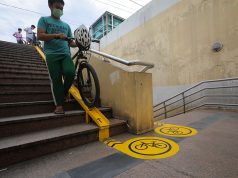Calls to increase and improve current bike-friendly lanes were once again made after a polling firm reported there were more bicycle owners than car owners in Metro Manila.
A news report noted that Social Weather Stations (SWS) found out there are four bicycle owners to every car owner in the nine national surveys the polling firm conducted from May 2020 to April 2022.
In the National Capital Region, the news report said there were more households that own bicycles than cars and motorcycles.
The figures were reportedly the same in rural areas where bicycles dominated four-wheeled vehicles.
SWS was also cited as saying that 80% of Filipino households believe better roads would encourage more people to use a bike.
The data was sourced from the polling firm’s online event “Bicycle Ownership, Usage, and Attitudes of Filipino Household Heads on Cycling as Transportation” on August 24.
Some Filipinos then called for more bike-friendly lanes to be established in the NCR, believing it will help lessen traffic as people would be more encouraged to use bikes than four-wheeled vehicles which take up more space.
In response to the report, transport economist Jedd Ugay of advocacy group AltMobility PH shared a quote and his comment on it on Facebook.
“‘Bakit may bike lane e konti lang nagbibisikleta?”‘ he shared with quotation marks.
“‘Di kasi sila stuck sa traffic kaya ‘di halata,” Ugay added as an answer.
“It only makes sense to transform our roads and infrastructure para maging bike-friendly,” another Facebook user wrote as a comment to the report.
“Tutal, the numbers are in: More people have bikes. Many people get discouraged to get on their bikes for their daily commute dahil napakapeligroso ng daan para sa kanila,” he added.
“Now they should fix bike lanes and enforce rules for everyone’s safety,” wrote a different Pinoy in response to the report.
“Dapat talaga bigyan ng pansin ang bike lanes. Kasi non-fuel consuming mode of transport ito… less accident at minor lang ang damage to persons and property… no permit at insurance pa at very affordable din kung gusto,” another Facebook user commented.
Last January, it was also reported by a senior survey specialist of SWS that bicycle-owning households have outnumbered those with cars.
Public transport advocate Robert Siy shared some of the findings in an article, writing:
“The SWS found that 20 percent of the households surveyed owned bicycles, compared to the 5 percent that owned cars. Extrapolated to a national level, this translates to an estimate 4.9 million bicycle-owning households compared to 1.2 million with four-wheeled motor vehicles.”
“Also significant was the prevalence of bicycle ownership in the National Capital Region (NCR). The survey found that 36 percent of NCR households owned bicycles–over a third of the population! (This can be compared with 11.5 percent of households that owned cars in the Greater Manila area as measured by a 2014 Japan International Cooperation Agency-funded study).”
While there are existing bike lanes in the metro, cyclists perceived them to be inaccessible and dangerous.
A bike commuter previously said that the lanes dedicated to them are commonly “used by motorists,” used as parking by vehicles, are “too narrow for bicycle[s] to access” or have “rough patches,” among others.
Last June, a picture of a bike lane in the metro gained international spotlight after some online users noticed a major part of it was permanently blocked by a bridge’s pillar.
A blog post by advocacy group Cycling Matters noted that one of the reasons bike lanes “fail” is because they are created without the input of actual cyclists.
“For example, the Ortigas commercial business district can be lauded for its attempt at protected bike lanes. But any cyclist will tell you that painted sections of the road are wickedly slippery when wet, and the bike lanes in Ortigas feature blue painted sections that become very dangerous when it rains,” Brian Paul Giron wrote in 2018.
“MMDA’s sidewalk-slash-bike-lanes along EDSA also use slippery red paint and features the occasional open manhole, and other fun obstacles like lamp posts and trees,” he added.
Last July, a senator filed a bill called the Bicycle Act of 2022 which seeks to establish a “Local Bikeway Office” that will manage the identification, construction, and maintenance of a bikeway network.
Months before that, the Department of Transportation said that the country’s bicycle lane network was expanded by another 68 kilometers as part of the government’s efforts to promote active transportation.
Reports said improvements include signage, solar studs for night visibility, pavement markings and physical separators such as bollards, concrete delineators and bike racks.










